Korea has a rich library of culinary delights that are sure to make your mouth water and leave you well-stuffed. From fiery BBQ to finger licking KFC (Korean fried chicken), fresh seafood, and ubiquitous kimchi. There are so many wonderful Korean dishes waiting for you. However, there are also some weird Korean foods that you might not be so familiar with.
These weird Korean foods aren’t all bad, they’re foods that might shock and surprise you though. Did you know horse meat is eaten in Korea? And that some people actually choose to order stinky fish that smells of pee? Don’t worry, there are actually a lot of really delicious Korean foods in this list.
If you want some ideas for unusual dishes to experience when you’re travelling or living in Korea, then be sure to take notes. Brave travellers, or people looking for that unique dish to share with friends, then read on and find out all the weirdest and wonder delights that Korea’s kitchens have to offer.
Affiliate Disclaimer: This site contains affiliate links and I may earn commission for purchases made after clicking these links.
The Weirdest Korean Foods You Should Try
I want to make it clear straight-off that although I’ve labelled these dishes as weird Korean foods, that doesn’t mean that they’re necessarily bad or disgusting. These dishes are ‘weird’ as they’re unusual, have an interesting story to tell, or might be shocking to non-Koreans.
In fact, some of them are foods that I enjoy regularly and taste great. Some I’ve tried once and never want to try again (4 & 5), some I haven’t tried and don’t think I ever will (7 & 8), others I try now and again but don’t really enjoy them (1).
I’ll let you decide which ones you think look disgusting, which look interesting, and which ones you would love to try when you visit Korea. If you know of any other weird Korean foods, please feel free to share them in the comments at the end. Now for the top 15 weird foods in Korea. I hope you can make it all the way to the end!
1: San-nakji – Raw Octopus Tentacles
In Korean: 산낙지
San-nakji is a Korean dish that shocks most people the first time they try it. What’s so weird about san-nakji? The wriggling tentacles squirm even after they’ve been removed from the rest of the body!
The first challenge when eating a bowl of san-nakji, besides being brave enough to order it, is to actually pick it up with your chopsticks. The tentacles are really strong and stick to the bowl and anything else they can touch. Trying to get them into your mouth is not easy. Once you’ve dipped it in soy sauce and got it into your mouth, be sure to chew thoroughly. Otherwise, you might find it resisting digestion and clinging on to your throat, which certainly isn’t a pleasant experience.
You can order san-nakji in many places in Korea. The best places to try this unusual Korean dish are by the sea, where seafood is freshest. You can eat it alone or as part of a seafood set, like in the picture above. I’ll admit, this dish does seem rather cruel, but it’s one that is very popular in Korea. Apart from the still active legs of the octopus, it’s the same as most other raw fish dishes that are popular around the world.
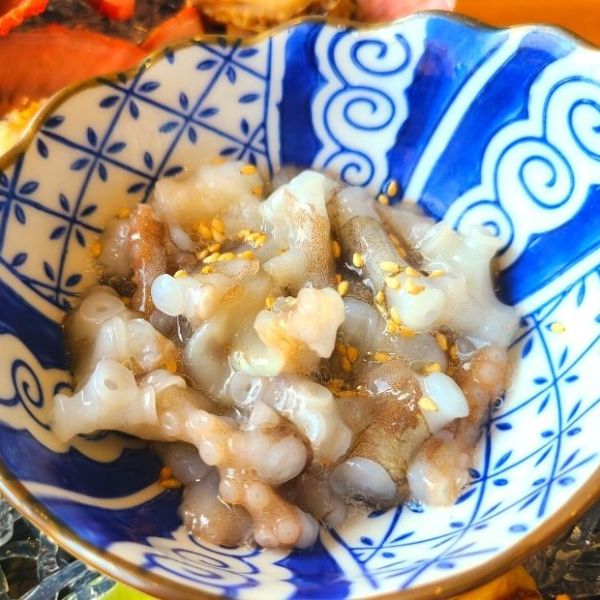

2: Yukhoe – Raw Meat
In Korean: 육회
Yukhoe literally means ‘raw meat‘ and can be made from a variety of different meats, but is usually beef. As you’ll discover from this list or weird Korean foods, raw meat and seafood are quite common in Korea.
The dish in the picture above is yukhoe bibimbap, a speciality of Jeonju. It consists of raw beef, a raw egg, and a mixture of vegetables and rice. Mix all the ingredients together and then eat as it is. This is a healthy dish and an interesting dining experience.
Yukhoe can be served as part of a number of other dishes, or just with rice. This is essentially Korean steak tartare, but the sauces you’d add, such as gochujang and soy sauce, give it a distinctly Korean taste. Sadly, yukhoe isn’t so common these days, but if you do find a restaurant selling it, be sure to give it a try. It’s perfectly safe and, even though it’s raw meat, you’re not likely to get food poisoning from it.
3: Mal-gogi – Horse Meat
In Korean: 말고기
Mal (horse) – gogi (meat) might be a dish hard to digest for some as it’s not a meat commonly eaten in many countries. Mal-gogi can come raw (yukhoe), BBQ’d, or served on rice like sushi. The most popular way to eat it is raw.
To try mal-gogi, you’ll need to travel to Jeju Island. Jeju Islanders have been eating horse for over 700 years, since the times of the Mongolian invasion on the island. This dish is considered a delicacy, so you might have a hard time trying to find somewhere that sells it even on Jeju.
Horse meat has lots of health benefits and has only 1/3 the amount of fat that beef does. The fat is unsaturated and dissolves quickly in the human body. It’s also high in protein and rich in other nutrients, including omega-3 and linolenic acid.
Some less authentic health beliefs are that it makes men stronger as horses are strong animals. As Jeju people say ‘Beef is not enough for a meal, but horse meat is.’ I’ll happily admit that I’ve enjoyed the raw form of this dish many times when I was living in Japan, where it is known as basashi. It has a strong meaty taste and is just like steak.
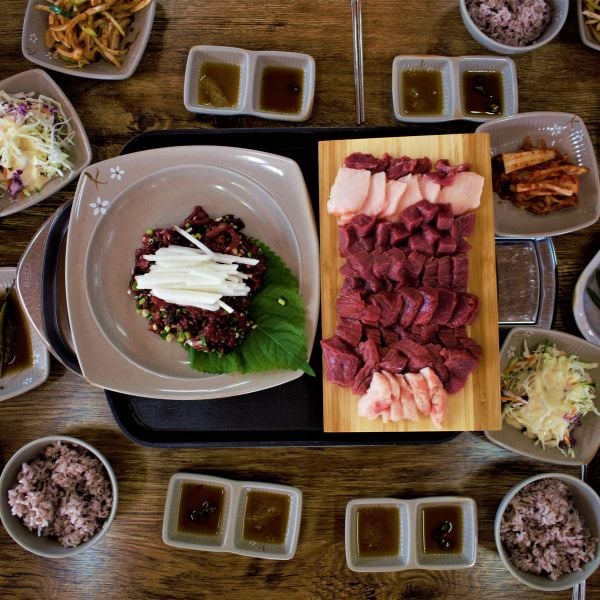
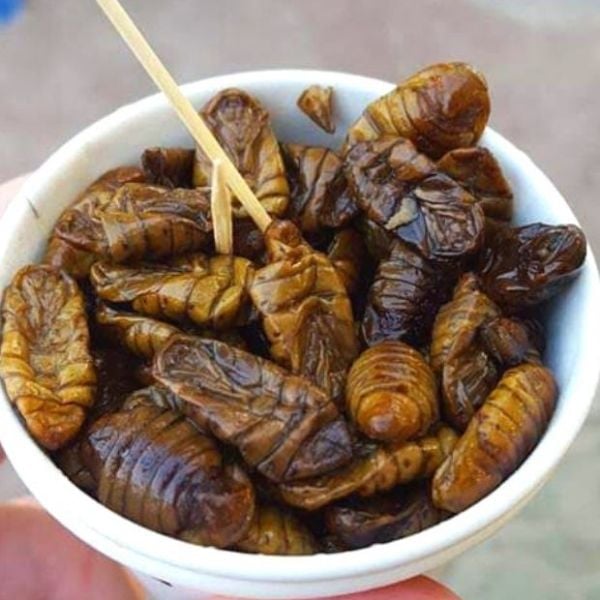
4: Beondegi – Roasted Silkworm Larvae
In Korean: 번데기
The ingredients for beongdegi are simple – just a big bowl of silkworm larvae roasted in an old metal pot. This is a cheap snack and a popular Korean street food enjoyed by many. What makes this so strange (beside it being a bug) is the strong, pungent smell it gives off. It floats through the air to attack you whenever you’re near. I tend to cross the road when I start to smell it.
This was one of the first of the weird Korean foods that I ordered when I arrived in Korea. I managed to eat about 4 of them before giving up. It’s certainly an acquired taste! On the plus side, beondegi is said to be healthy with lots of high quality, low-fat protein. Worth it? You can find beondegi at festivals, national parks, and near major tourist sites and make up your own mind.
5: Hongeo-Hoe – Raw Fermented Skate
Korean: 홍어회
Another one of Korea’s weird foods that I was introduced to early on in my time in Korea is hongeo-hoe. This isn’t so much a dish as it is a challenge – something you might see on a TV survival show. Want to know what makes this dish so weird? Well, the skate is an unusual fish that doesn’t urinate, instead it passes the uric acid through its skin. Consequently, when you ferment the skate, the smell ends up like ammonia – which is extremely stinky! That stays on the fish when it’s served to you for dinner.
Seriously, you’ll need to hold your nose when you eat this dish. Grab a bit of kimchi and some boiled pork and pop it all into your mouth at the same time. The smell is a lot worse than the taste, not that either are really pleasant.
If you are brave enough to try san-nakji, why not level-up and try hongoe-hoe? Good luck!
Planning to visit Korea? These travel essentials will help you plan your trip, get the best deals, and save you time and money before and during your Korean adventure.
Visas & K-ETA: Some travellers to Korea need a Tourist Visa, but most can travel with a Korean Electronic Travel Authorisation (K-ETA). Currently 22 Countries don’t need either one.
How To Stay Connected: Pre-order a Korean Sim Card or a WiFi Router to collect on-arrival at Incheon Airport (desks open 24-hours). Alternatively, download a Korean eSIM for you travels.
Where To Stay: For Seoul, I recommend Myeongdong (convenient), Hongdae (cool culture) or Gangnam (shopping). For Busan, Haeundae (Beach) or Seomyeon (Downtown).
Incheon Airport To Seoul: Take the Airport Express (AREX) to Seoul Station or a Limo Bus across Seoul. Book an Incheon Airport Private Transfer and relax to or from the airport.
Korean Tour Operators: Tour companies that have a big presence in Korea include Klook, Trazy, Viator, and Get Your Guide. These sites offer discounted entry tickets for top attractions
Seoul City Passes: Visit Seoul’s top attractions for free with a Discover Seoul Pass or Go City Seoul Pass. These passes are great for families and couples visiting Seoul – you can save lots.
How To Get Around: For public transport, grab a T-Money Card. Save money on Korea’s high speed trains with a Korea Rail Pass. To see more of Korea, there are many Rental Car Options.
Travel Money: Use money exchanges near Myeongdong and Hongdae subway stations for the best exchange rates. Order a Wise Card or WOWPASS to pay by card across Korea.
Flights To Korea: I use flight comparison sites such as Expedia and Skyscanner to find the best flights to Korea from any country. Air Asia is a good option for budget flights from Asia.
How To Learn Korean: The language course from 90 Day Korean or Korean Class 101 both have well-structured lessons and lots of useful resources to help you learn Korean.
6: Cheonggukjang Jjigae – “Dead Body Soup”
In Korean: 청국장찌개
Firstly, there are no actual dead bodies in cheonggukjang jjigae! The name originates from the smell (yet again, Korea!) of the key ingredient in this dish – cheonggukjang. The real name of this dish in English is ‘extra-strong fermented soybean paste stew’. Cheonggukjang is a stinky soybean paste that gives this dish its meaty taste. When you add this paste to the soup, the smell really blows up and things start to get stinky. The smell lingers for a long time, too, which really doesn’t help.
Why is this dish known as ‘Dead Body Soup’?
Some Korean students were cooking this dish in Germany and the neighbours started to smell something strange. Thinking there was a dead body inside (that’s how bad it is), they called the police. Fortunately, no one was actually being cooked for dinner and the police let them eat in peace. You’ll understand why they might have thought otherwise if you give this weird Korean food a go.
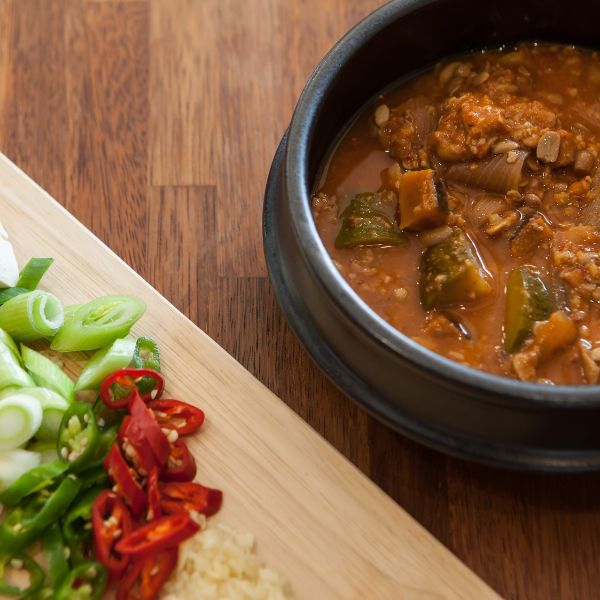

7: Gaebul – Live Spoon Worms (Penis Fish)
In Korean: 개불
This fish (bottom left of the picture above) looks weird even before its been prepared to eat and I’m sure you can guess where the nickname ‘penis fish‘ comes from. This makes into onto the list of weird Korean foods for a different reason, however. That’s because of the way the dish is served – raw and squirming. Yes, more raw food.
I can only describe gaebul as ‘fleshy pasta that’s dancing around on your plate’. You’ll understand why if you watch this video. Raw fish is common in many countries, but it’s not normally so energetic! Are you brave enough to try some dancing penis fish? Make sure to take a video if you order it.
8: Boshintang – Dog Meat Stew
In Korean: 보신탕
Most controversial of all these weird dishes, and one that has given Korea a bad reputation internationally, has to be boshintang – dog meat stew. This isn’t a common dish in Korea, but it is one that you can still find if you’re looking for it. Less common in the cities, this is mostly eaten in the Korean countryside.
Some people believe that boshintang will give you ‘stamina’, just the way a rhino’s horn will, apparently. Most of the customers are older Korean mean who want some magical gift of life that they believe comes from eating our furry friends.
Fortunately, most Koreans disagree, and there is a lot of effort to rescue dogs instead of sending them off to become someone’s dinner. Technically still legal in Korea, laws will hopefully be passed in the future to ban the sale of dog meat. In fact, in 2025, there has been a law passed that will see the end of raw dog consumption in Korea within the next few years.
In case you’re wondering, the texture is similar to goat. I’ve never tried it and definitely don’t plan to. However, if you really want to try it, and you don’t have any objections to eating dog meat (as many millions of people in the world still do) your best option is to explore the Korean countryside.
9: Dakbal – Spicy Chicken Feet
In Korean: 닭발
Koreans seem to love this simple dish of chicken feet covered in spicy sauce, and yet hate it at the same time. At least, that’s how it looks as tears fall down their cheeks and they look like they’re in pain, and yet also smiling. I’ve tried dakbal a few times, and it’s one of the spiciest Korean foods I’ve had. I was only able to eat a small amount. I’m not that strong when it comes to feasting on fiery foods, but this was excessively hot.
This dish is enjoyed by many in Korea and is best shared with a few mates and a couple of glasses of beer. Drink some milk afterwards to take away the burning sensation, then head out for the rest of the night. If you can. The idea of eating chicken feet may seem strange to some, but you don’t even notice it after a few bites. They don’t taste of much, hence the excessive levels of spicy sauce. It’s a bit like eating really spicy, meaty gummy bears.
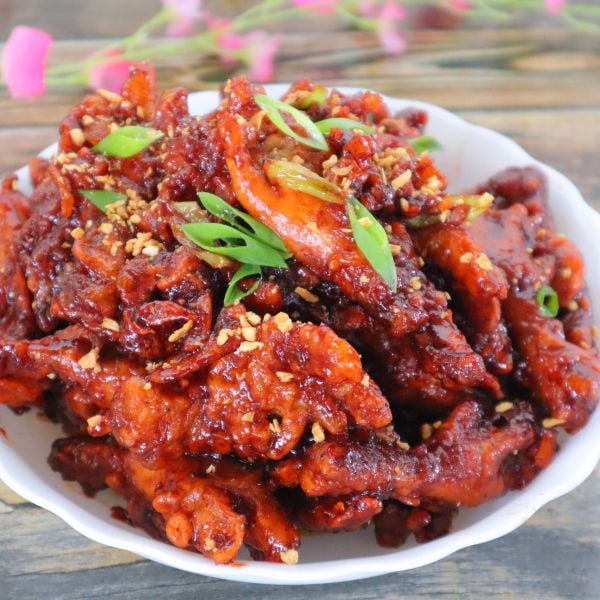
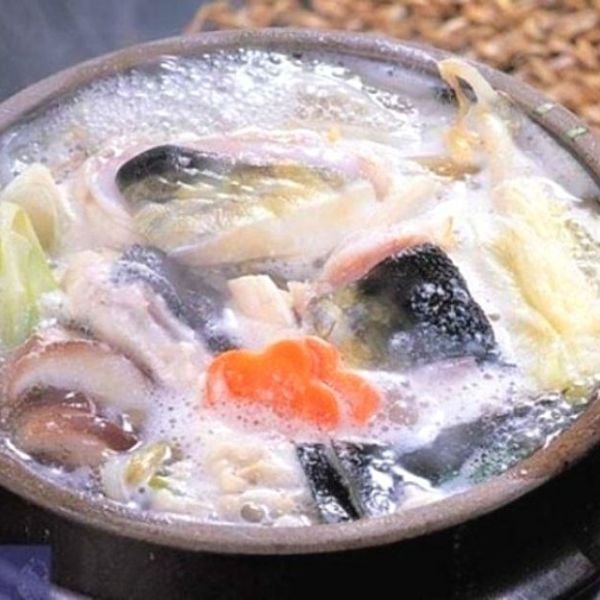
10: Bokjili – Deadly Blowfish Soup
In Korean: 복지리
You may be familiar with fugu, Japan’s famous dish made from a deadly blowfish that can kill if it isn’t prepared properly. It’s expensive, requires a license, and years of training before a chef can serve it. Fortunately(?), Korea is more relaxed about a fish full of highly poisonous neurotoxins. These blowfish are more widely available and don’t have the same restrictions when cooking it as they do in Japan.
The most common way that these blowfish are prepared is in bokjili. You’ll find lots of blowfish meat, vegetables, herbs, and spices in this hearty soup. Bokjili is a cheap seafood dish that you’ll find served in coastal regions. It’s a lot cheaper than fugu and the taste isn’t that strong. The meat is cloud-like – incredibly soft and almost fluffy.
11: Sundae – Blood Sausage
In Korean: 순대
One of the oldest traditional dishes in Korea, sundae might make you squeamish at first, but shouldn’t be missed. In case you’re wondering, it’s pronounced soon-day, not sun-day. Sundae is kind of a cross between haggis and black pudding. It is also really delicious and a wonderful, cheap snack. Sundae traditionally contains pig or cow’s intestines mixed in with blood, rice, vegetables, and noodles. This mixture is then steamed and served sliced up, ready to eat.
I guess it’s the blood that puts some people off, even though it’s eaten in many different countries around the world. You should eat sundae by dipping it into a bowl of salt or other seasoning. It goes well with cold beer, too. Popular with Korean youths, you can find this cheap snack for sale at many traditional markets in Korea.
12: Fruit Sandwiches
In Korean: 과일 샌드위치
The next of these weird Korean foods gets on the list because it’s just wrong to me. Being British, a sandwich should be a certain way, and I just can’t imagine putting fruit between two slices of bread. Madness! In Korea you can find a medley of assorted fruits stuffed inside of an honest sandwich, where they don’t belong. You can find orange, kiwi, strawberries, and lots more that simply shouldn’t be there, including the cream filling.
The cream cements the fruit into place, but also gets all over your fingers while you’re trying to eat it. The whole thing becomes more of a dessert than a humble lunchtime snack, making me think it should come with a spoon. Lots of people seem to enjoy these sandwich-desserts, and the convenience stores all stock them. Perhaps you’ll enjoy them more than I do. I just find them strange and wish I could find a decent cheese, ham, and pickle sandwich somewhere.
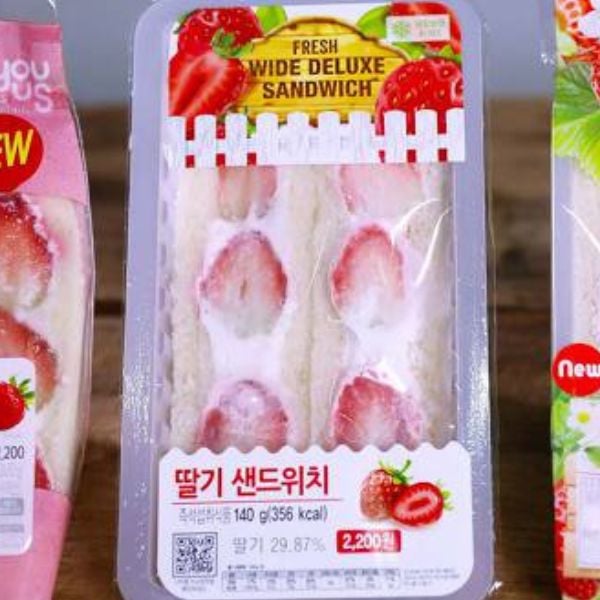
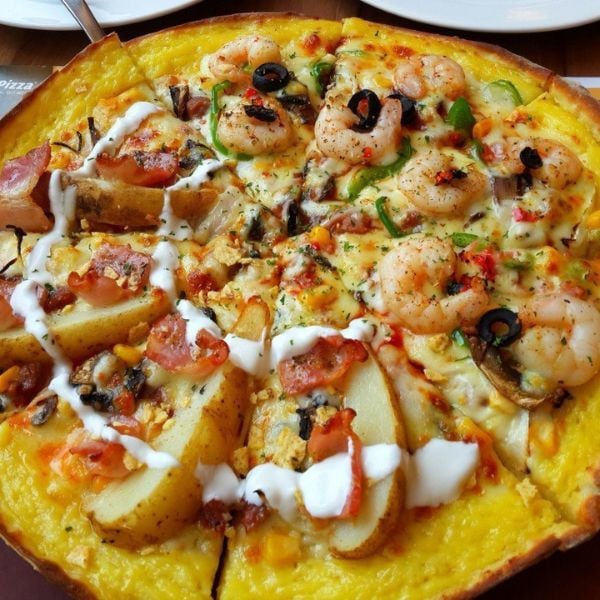
13: Korean Pizza
In Korean: 피자
I’m going to include Korean pizza on this list of weird Korean foods because of all the unusual toppings you can find here. Sure, there are cultural differences, and tastes vary in each region, but some things you’ll find on a pizza in Korea just don’t make sense.
Some weird toppings you’ll find on Korean pizzas include corn (on many pizzas – why?), potato wedges, broccoli, mayonnaise (in large quantities), pickles, whipped cream, pasta, squid legs, and lots of fruit. It’s not just the toppings you’ll find, it’s the quantity, too.
I once ate a squid ink pizza (in the dough), which had lettuce, grapefruit, cherry tomatoes, grated cheese, ham, salad dressing, olives, nuts, kiwi, lumps of cheese, croutons, and orange segments. Possibly more. It was like a 3 course meal.
Of course, there are plenty of great pizzas in Korea, such as bulgogi pizza with flame grilled beef, or steak and shrimp pizzas. You need to be careful working your way through the landmine of options to find the good ones though. And don’t get me started on the pickles…
The pulled fork pizza below sounds very painful to eat! Yes, I know it’s just a Konglish mistake, but you can never be too sure. If you want to see some more funny Korean signs like this, check out this post all about the wonders of Konglish and funny Korean spelling mistakes.

14: Poop Latte & Poop Bread
In Korean: 장미라떼 & 똥빵
Not a traditional Korean dish, but one that you’ll only find when you visit Seoul, are these delicious, dirty delights. There’s a cafe in the Ssamziegil Art Mall in Insadong that produces poop-based goodies. You can grab a choco-filled poop bread as a quick snack to go, or stay in and enjoy a rose latte in a miniature toilet-shaped cup (pictured above). Lovely.
I’ve visited this place several times and it’s a must see when you’re in Seoul if you want some unusual Insta-worthy pictures and yummy treats. You can even get a curry in one of the hole in the ground style toilets if you’re brave enough. Don’t forget to dress up in the cute poop hats and snap pics of all the interesting pictures and displays.
It’s on the top floor of the mall and gives great views of the Insadong Art Street. Shockingly, this is not the only poop-based place you can visit in Korea.

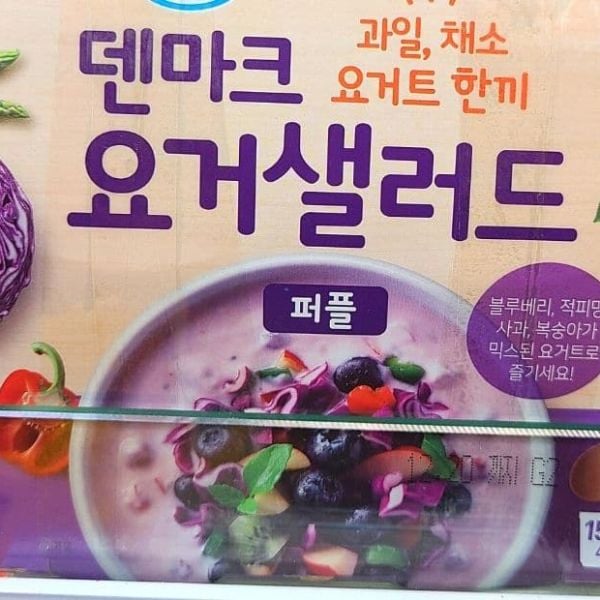
15: Salad Yogurt
In Korean: 요거샐러드
Yogurt dressing on a salad isn’t that weird, but how about adding salad as an ingredient into a yogurt? For me, this is really weird and not a breakfast treat I’d want to try. A Korean yogurt company has released a range of colour-coordinated (not taste?) salad yogurts that contain a variety of purple, green, or orange fruits and vegetables to give you a healthy start to the day.
The orange one contains pumpkin, carrots, corn (corn is everywhere in Korea), and pineapple. I’m not sure those ingredients would ever go together in a salad, but they all have a shade of orange-yellow, so they’re OK for this weird Korean dish, apparently.
The green version doesn’t seem too bad at first. Kiwi and apples are lovely together. Asparagus and celery, though. I’m not sure they work. Has Korea invented the perfect breakfast? What else do you think could go inside a yogurt? Any interesting flavours you’d like to try?
Where To Find These Weird Korean Foods
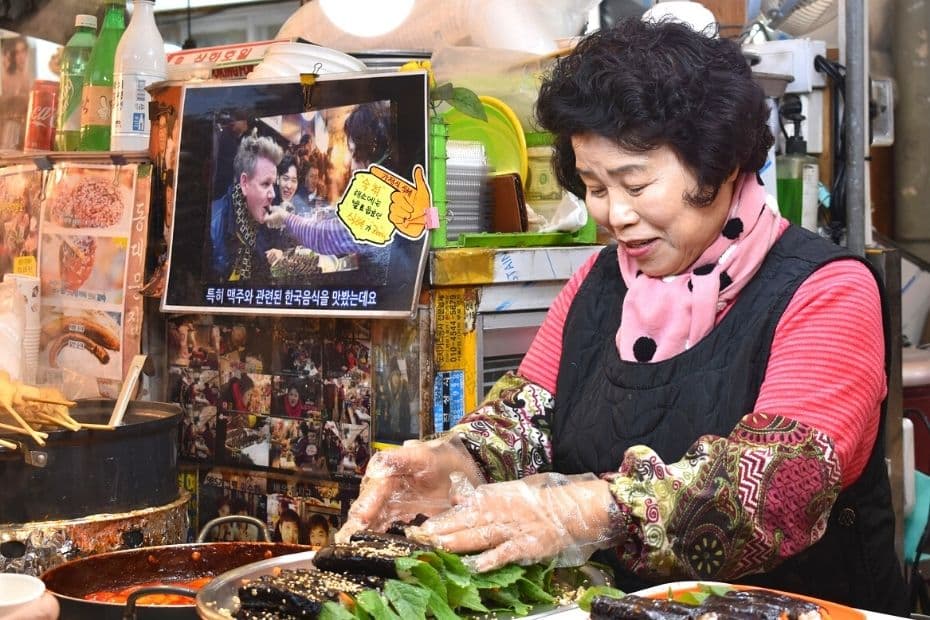
Some of these weird Korean foods are common and you can get them throughout Korea. Dakbal (닭발) is popular and you’ll find it in downtown areas and around bars (goes well with beer) Sundae (순대), too. Fruit sandwiches can be found in convenience stores, which are literally on every street corner in Korea.
However, some of these dishes are a little unusual and will be harder to find. For example, you rarely see boshintang (보신탕) in the city, it’s typically served out in the countryside. Other dishes, such as beondegi (번데기), are served at festivals and around popular tourist attractions, including Gyeongbokgung Palace.
Seafood meals are most commonly found at, you guessed it, the seaside. Busan is a popular place to check out these weird Korean foods. Jeju Island is great place for seafood, too, and your best chance to try mal-gogi (말고기).
How About Some Not So Weird Korean Foods?
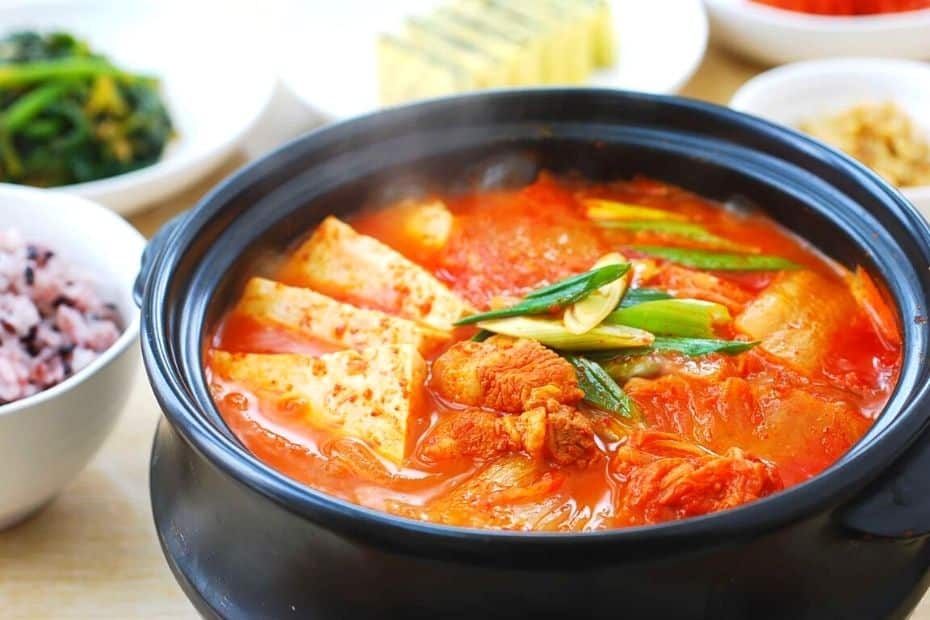
What are the must-eat traditional Korean foods to sample when you visit Korea? Find out in my guide to the 20 best traditional Korean dishes, which will introduce you to some of the most-loved Korean dishes. Don’t forget the banchan! Korean side dishes are an essential part of any Korean meal.
Discover the joy of eating warming winter Korean snacks in this complete guide to the best winter dishes and street foods you simply must try when visiting Korea in the cold. And make sure you don’t offend anyone when eating Korean food – weird or otherwise – with this guide to Korean etiquette.
Not sure how to order food in Korea? Want to learn a few simple phrases that will show your interest in talking to locals when dining and exploring Korea? Learning some simple Korean dining phrases will go a long way to helping you get the most out of your journey to Korea.
Try A Korean Cooking Course In Seoul
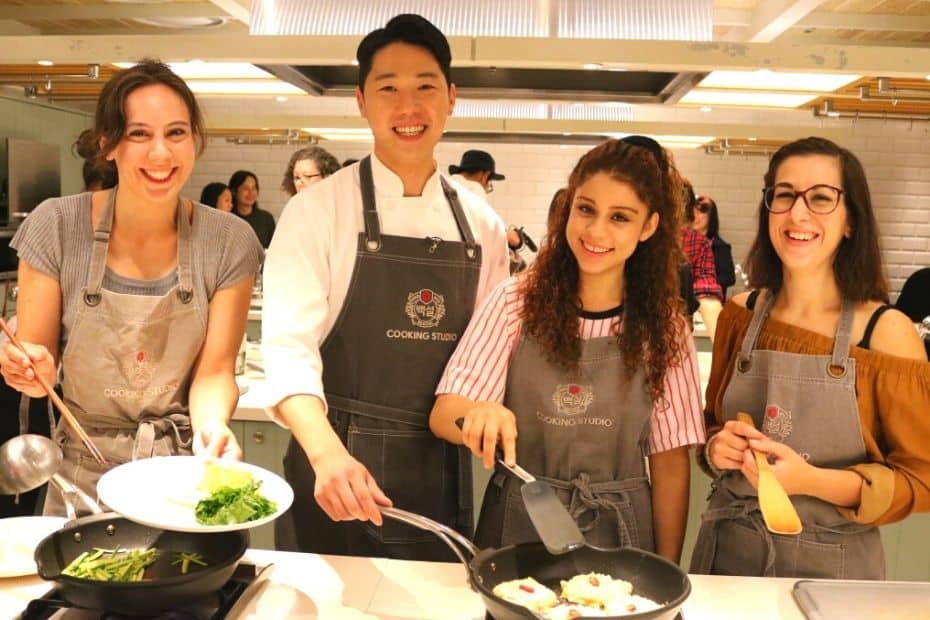
Curious about what these weird Korean foods taste like? Or would you rather sample some more traditional Korean dishes? Why don’t you try learning a new skill when in Seoul?
Enjoy making a range of delicious Korean dishes with a Seoul cooking course. Learn to make delicious Korean dishes to share with your friends and family and take home more than just souvenirs.
Learn To Make Korean Dishes At Home
Want to try making Korean dishes at home but not sure where to start? Here are some Korean cookbooks to teach you how to make a range of tasty Korean treats. Start with the basics, such as tteokbokki and mandu, or jump straight into filling meals like kimchi jjigae and jjamppong. Also, be sure to buy a stone bowl for those tasty winter stews and soups.

Maangchi’s Big Book Of Korean Cooking
The book contains the favourite dishes by famous Korean chef and YouTuber, Maangchi. She has perfected many Korean meals over the years, from Korean barbecue and fried chicken to bulgogi and bibimbap. Discover Maangchi’s professional approach to Korean cooking today.
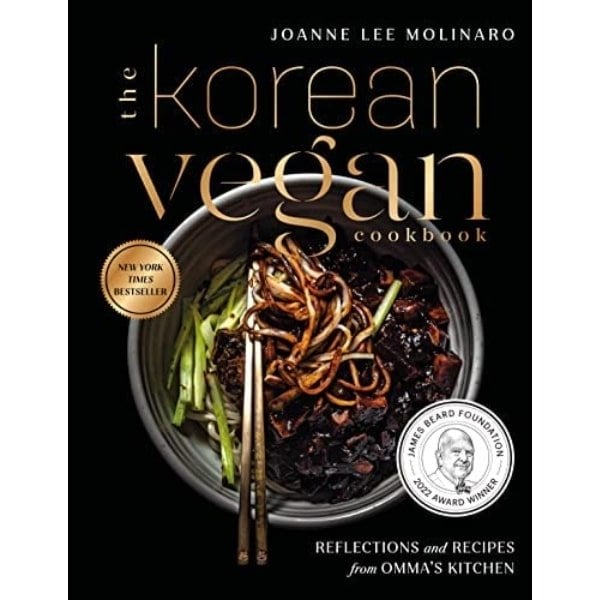
The Korean Vegan: Joanne Lee Molinaro
Joanne Lee Molinaro has captivated millions of fans with her powerfully moving personal tales of love, family, and food. In her debut cookbook, she shares a collection of her favorite Korean dishes, some traditional and some reimagined, as well as poignant narrative snapshots that have shaped her family history.
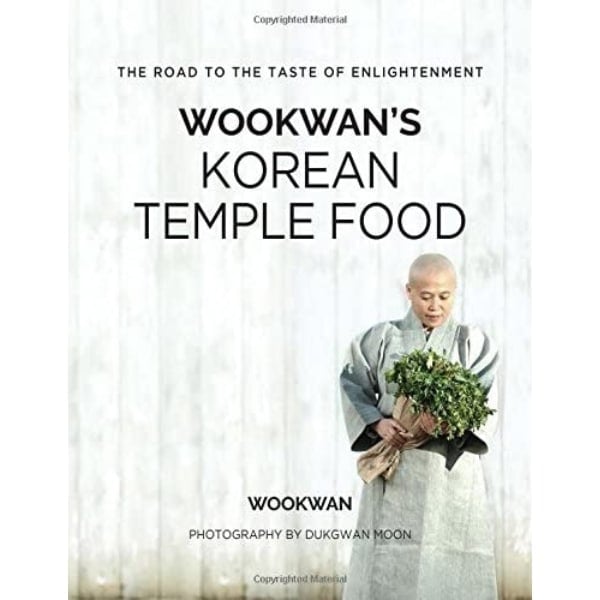
Wookwan’s Korean Temple Food
As the first volume of temple cuisine published in English, Wookwan herself has written an elegant volume that introduces the reader to Korean temple food, including what it means to care for the ingredients at each step of preparation, following the three key principles of cooking temple food, interspersed with her own accounts and tips among the recipes.
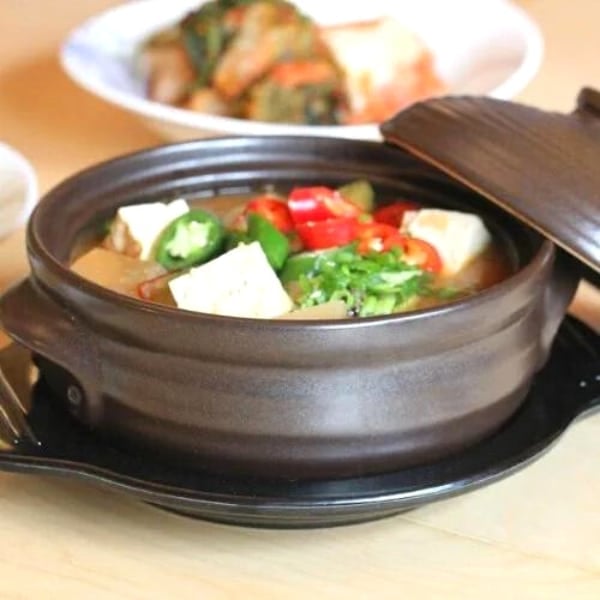
Korean Stone Bowl Cooking Pot
An essential part of many Korean winter dishes is the stone bowl (dolsot) cooking pot. This can be used to make dishes such as dolsot bibimbap, kimchi jjigae, and many other hot soups and stews.
Cookbooks not your thing? Check out the Baek Jong Won YouTube channel. He’s one of Korea’s most famous chefs and you can find his restaurants all over the place. He can teach you to make tteokbokki and many other tasty Korean winter foods.
Liked This? Pin It For Others
If you enjoyed reading this article, then please share this with your friends on Pinterest.
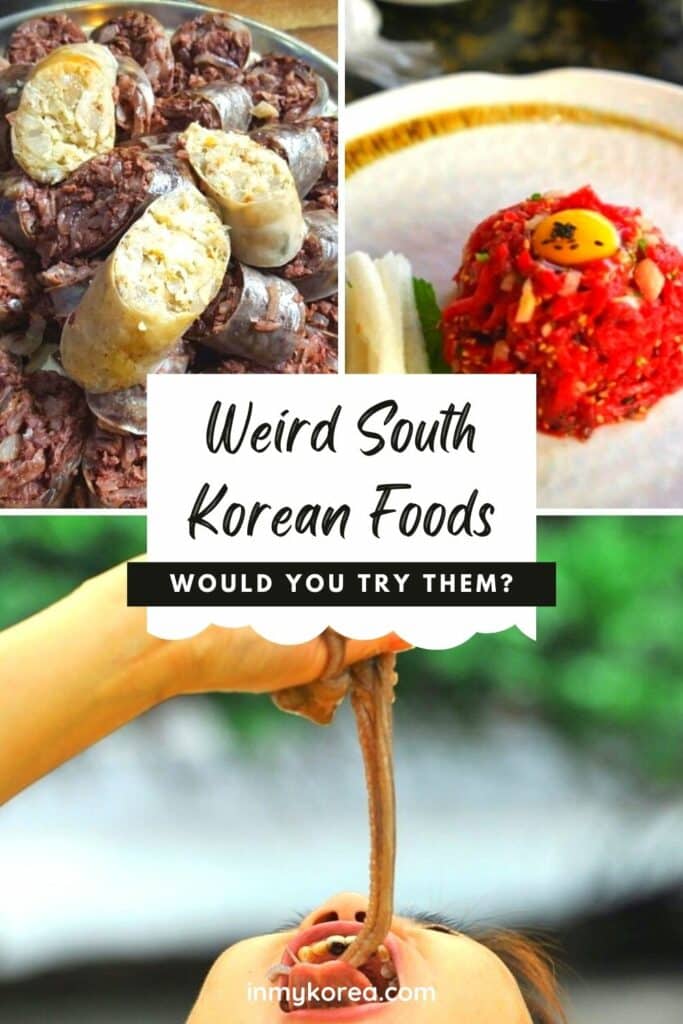
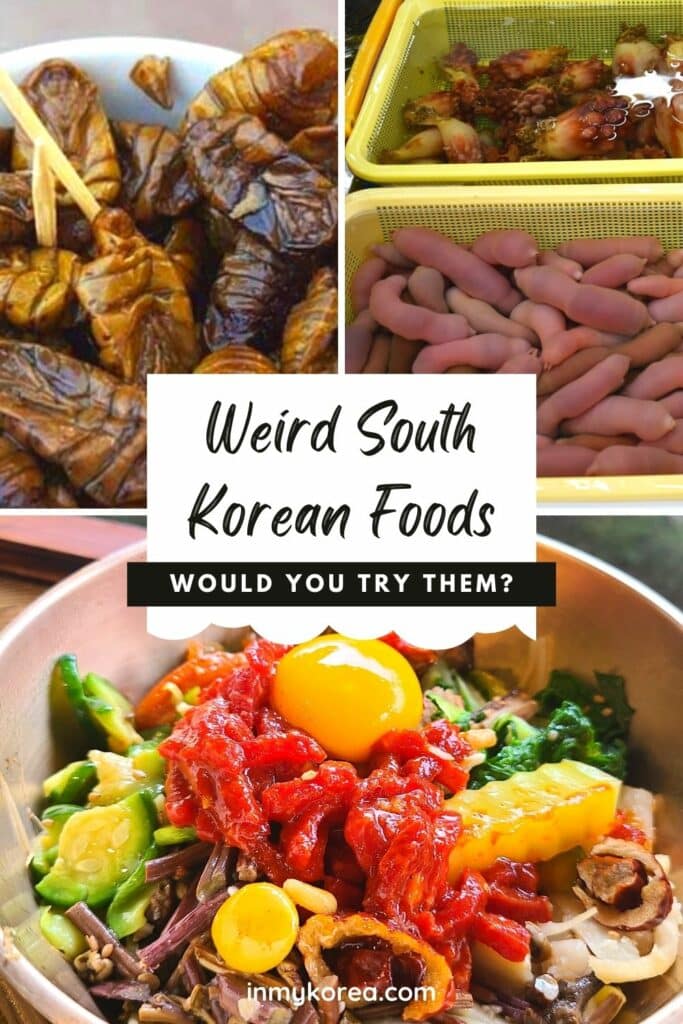
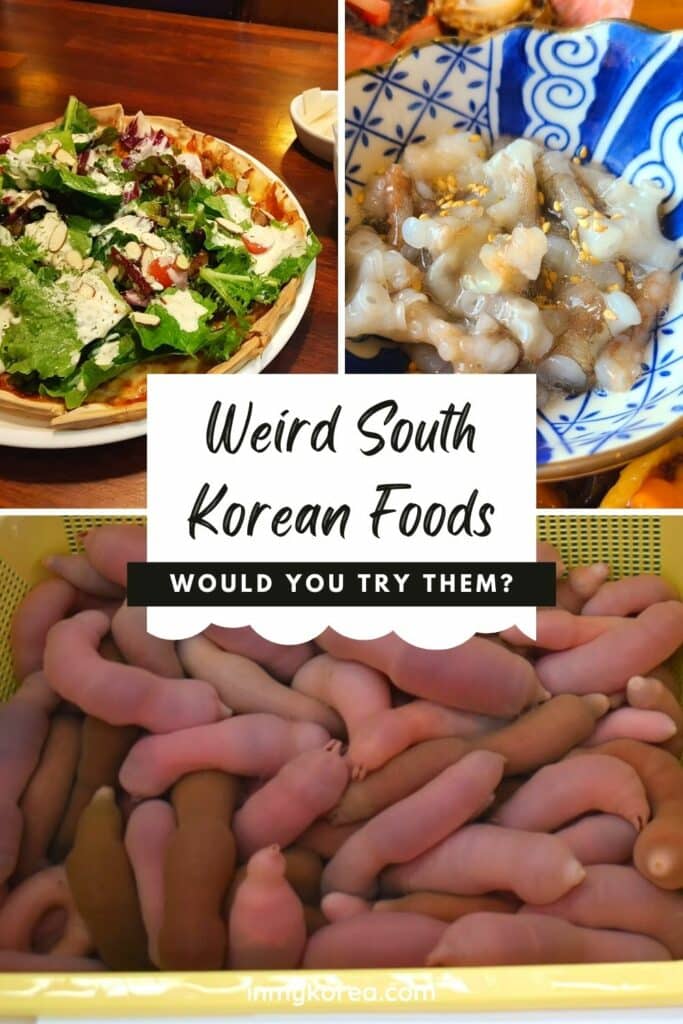



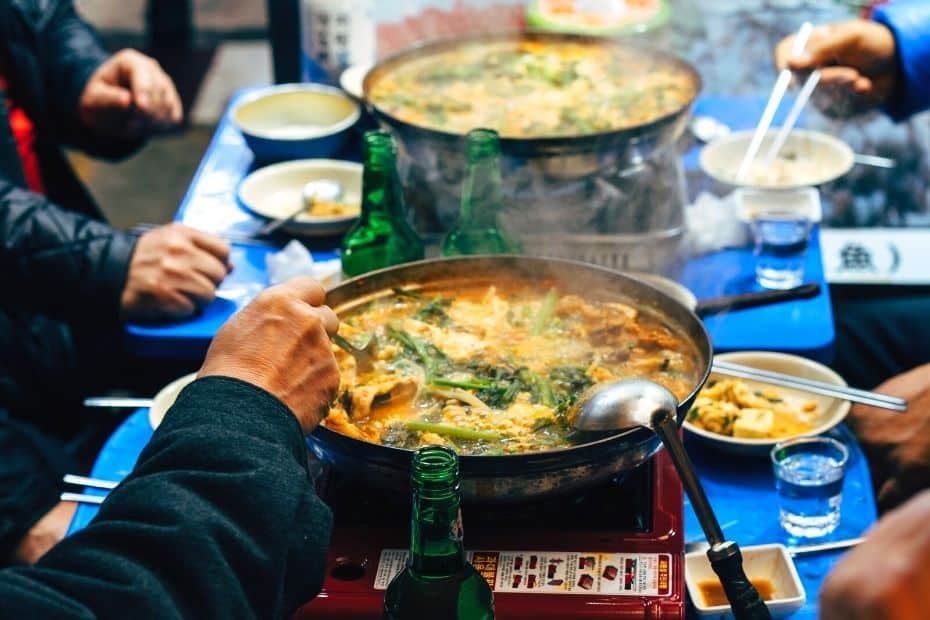



These are some of the most disgusting dishes I have ever heard of.